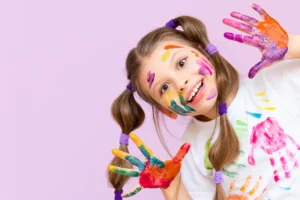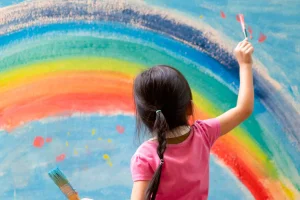Art Lessons Help Children To Think And Express Themselves Clearly
![]()
- Posted by abrakadoodle.com.sg
- Categories Art Education
- Date 24 December 2022
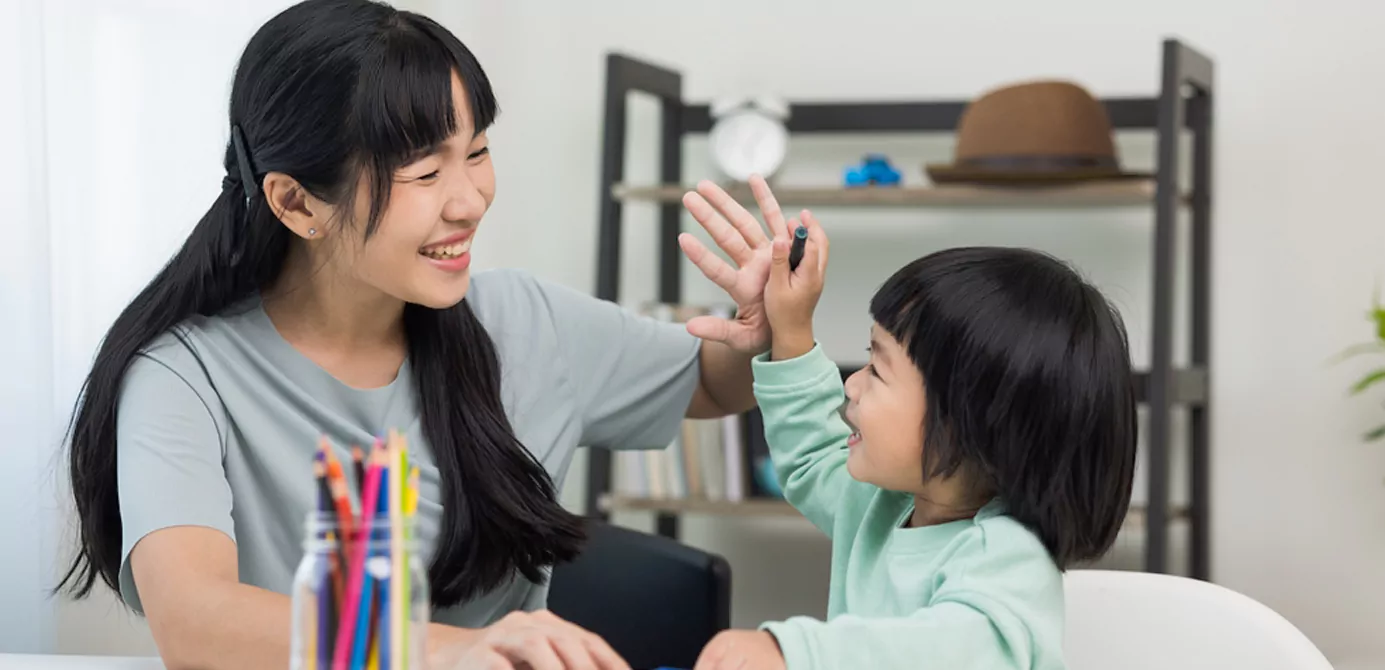
Art has a critical role in your child’s life as it exposes her to a unique range of learning experiences. Unlocking the true potential and helping your child to develop skills in communication, creativity and problem-solving.
Arts and crafts are fun activities for children – whether it is colouring with crayons or making miniature statues with play dough, folding paper to create fascinating origami or designing a handmade birthday card. Art activities enhance and sustain the interest of the children and helps to build their cognitive, physical, and social development.
Art lessons for children help to process and communicate difficult and pent-up emotions and feelings. If these harmful reactions are not released, they will harm a child’s mental well-being.
Table of Contents
ToggleGoals & objectives of art lessons
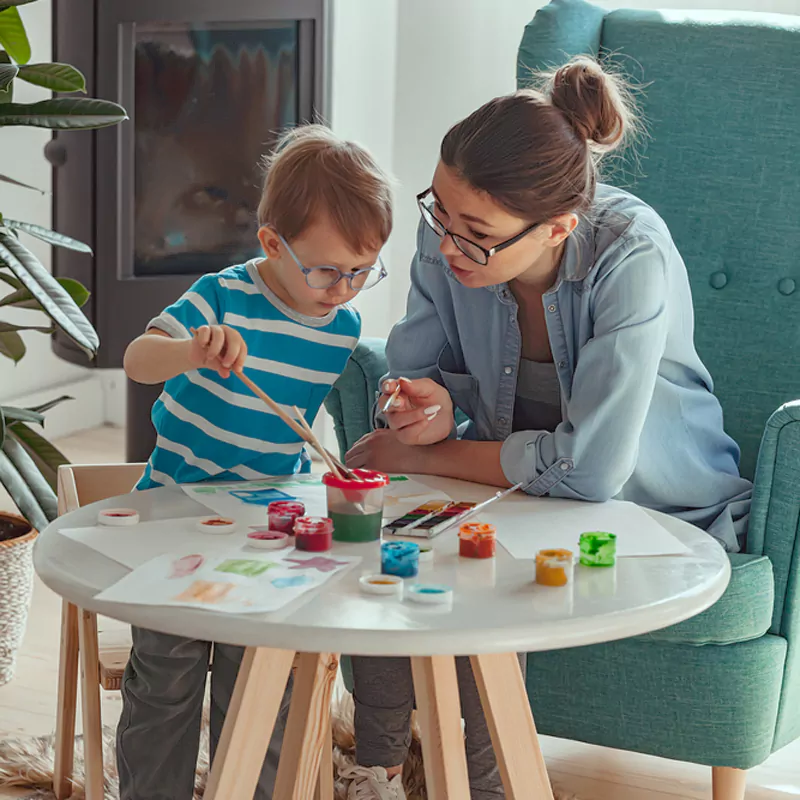
- Art lessons for children help develop and enhance awareness and understanding of the world, particularly the natural world and the world we live in. around the visual arts, through a thorough study of design principles and observational practices.
- Art lessons for children help children recognize design elements such as lines, shapes, colours, and space. Become familiar with the visual structure of objects and scenes.
- Introduce children to an array of art materials and more contemporary and innovative art techniques.
- Help children engage and fully understand the principles of visual arts. Be able to access their visual intelligence and enhance their capability to solve problems.
- Enable children to make art that reflects their understanding of life and its experiences. Be able to present their ideas in cogent, original, and convincing ways.
Impact of art on the mind
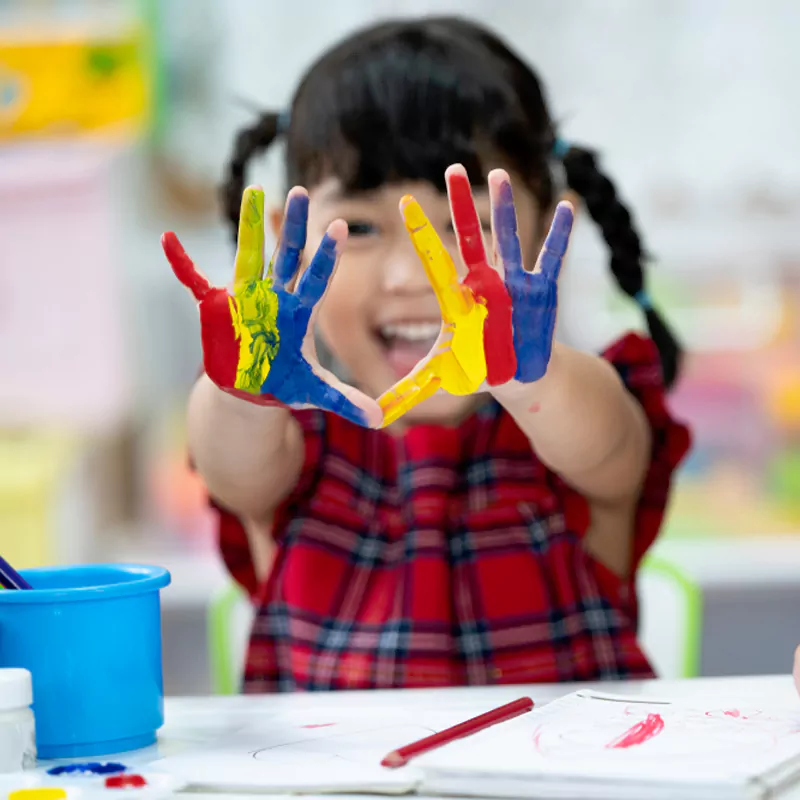
This is a place to start your child’s love affair with art and creative expression. Apart from giving children numerous opportunities to enjoy and exercise their creative thinking abilities, mindful activity engages young minds to explore and discover effective learning processes that support positive educational outcomes.
Mindfulness stimulates creativity and imagination. It provides visual and sensory experiences and a special way of understanding and responding to the world we live in. And art enables children to communicate what they see, feel and think through the use of colour, texture, form, pattern and different materials and processes. Furthermore, children become involved in shaping their environments through art activities.
Art is valuable not only as a stand-alone activity but provides the perfect link between all subjects – Science, Technology, English and Math (STEM). As a matter of fact, art can act as a great delivery system for making complex concepts of these subjects easy and simple to understand.
Art helps in developing motor skills
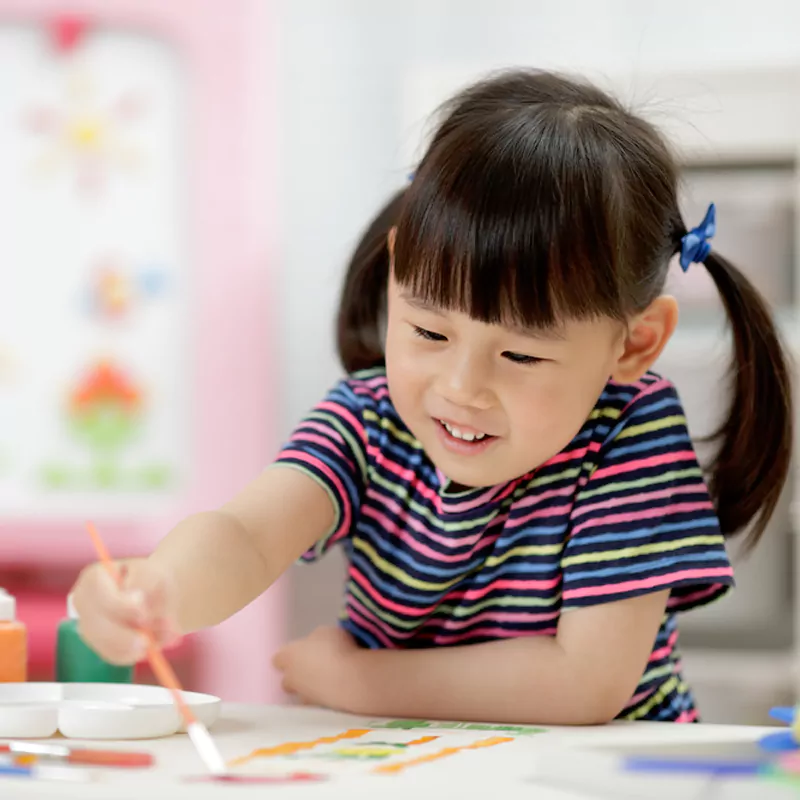
The alignment of the spine and the development of deep stabilising muscles begins early when the baby engages in lots of wriggling and squirming. This continues throughout the first year with ‘tummy time’. It is a natural process.
Going through these normal developmental movement patterns of rolling, belly crawling and creeping on all fours every day, ensures that by the time a baby is able to stand up, she will have a naturally aligned spine, a strong back and a good posture. A child can then moves onto more complex and refined movements of the arms and legs.
Art lesson plans for preschoolers help to develop gross and fine motor skills in very young children. These include movements of larger muscle groups that help with balance and coordination, as well as develop the finer motor skills, which are the smaller muscles in the hands and fingers. These are essential for writing, drawing and other precise actions that need more refined hand-eye coordination.
Arts and crafts activities enhance a child’s dexterity and agility. With the enhancement of both gross and fine motor skills through practice, a child’s manual dexterity, artistic skills, and speed also increase.
Improve self-expression & manage feelings
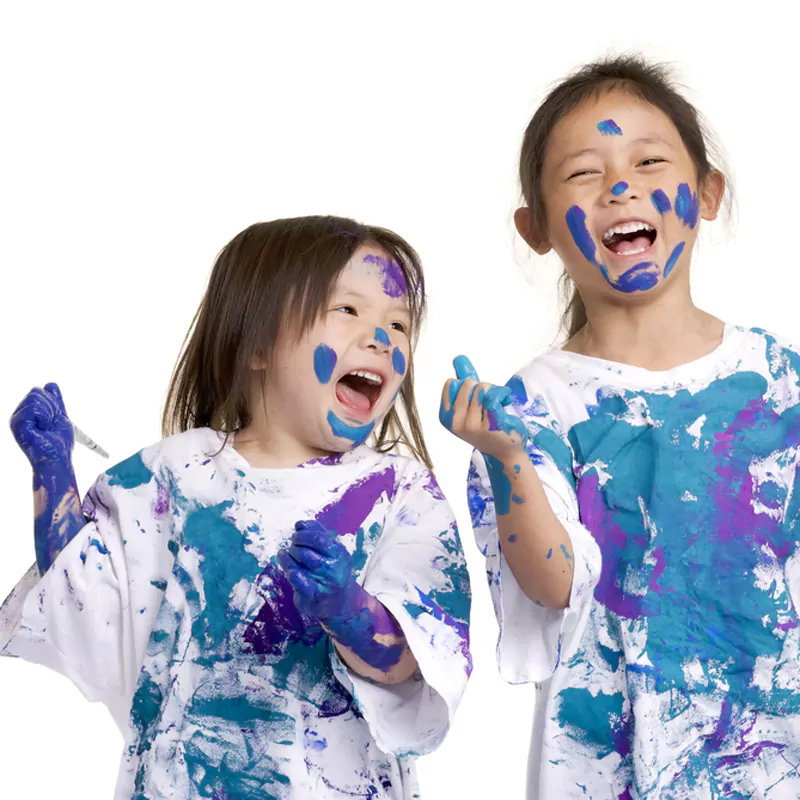
Humans are hardwired to express themselves. You just have to look at young children to understand what can happen when they don’t have the words to describe what they are feeling. They let their emotions take off. It could be an angry yell, a scream of joy or an outburst of crying – and sometimes doing all three within a span of two minutes!
Expressing emotion through art is an incredible way for children to release their feelings before these embed themselves far too deeply and begin to create other problems. Studies show that whenever we suppress or deny an emotion to be what it needs to be, our neural pathways get blocked. Pretty soon, all the feel-good hormones that dictate both our biology and behaviour are unable to flow freely.
Arts and crafts activities are an effective creative outlet for children to reflect and manage their emotions. It doesn’t matter if it is through painting or drawing or writing, being involved in the process of turning a thought into a tangible piece of art in itself will suffice.
There is no need to follow rules because there aren’t any. When you are creating something that is a reflection of you, it’s best to let your emotions guide you to feel fully and completely. This allows a child’s thoughts and feelings to be moulded into something tangible and real.
Each time your child creates a work of art, she is sharing new ideas, and trying out different ways of expressing herself. Doing this without realising your child is revealing her innermost thoughts and feelings through her artwork.
Improve confidence & self-esteem
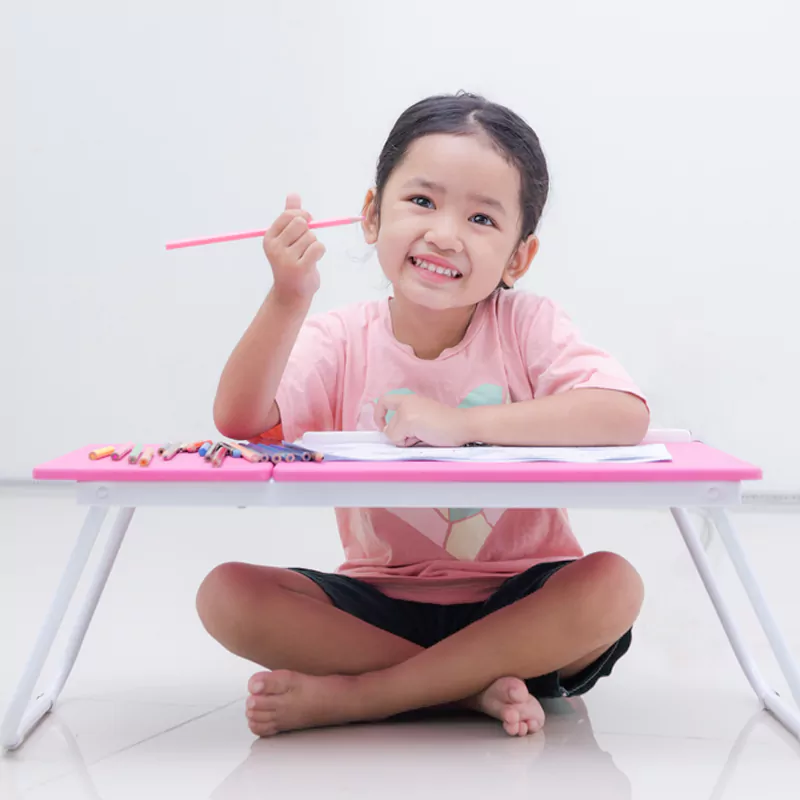
To be able to have high self-esteem, children must believe in their abilities and in themselves. It’s this self-belief that allows children to try new things, challenge themselves, take criticism, make mistakes and build friendships.
Art lesson plans for preschoolers aim to improve confidence and self-esteem in many ways. It helps children gain the confidence to express themselves freely. Enabling them to channel thoughts and feelings into their artwork and communicate how they are feeling. When children receive positive or constructive feedback, this not only boosts self-esteem but allows children to recognise their own strengths and achievements.
Always try to value effort over perfection. To show them that it’s OK to make mistakes, reassure them that it’s all part of learning and that you too can make mistakes! Make it a point to provide hands-on support. Simply because children learn best by copying what they see, so if they’re learning to draw, help them hold a colouring pencil and guide their hand across the sheet of paper. As they get older and more confident, start art activities but do this separately, this way their need for hands-on support lessens over time.
As art differs greatly from one person to the next, it reinforces your child’s individuality and recognizes her unique existence. Furthermore, the more a child engages with art, the more she will grow in confidence. By learning new techniques and having a better understanding of how art makes her feel, your child’s sense of self-worth will be enhanced and nurtured.
Art helps develop patience
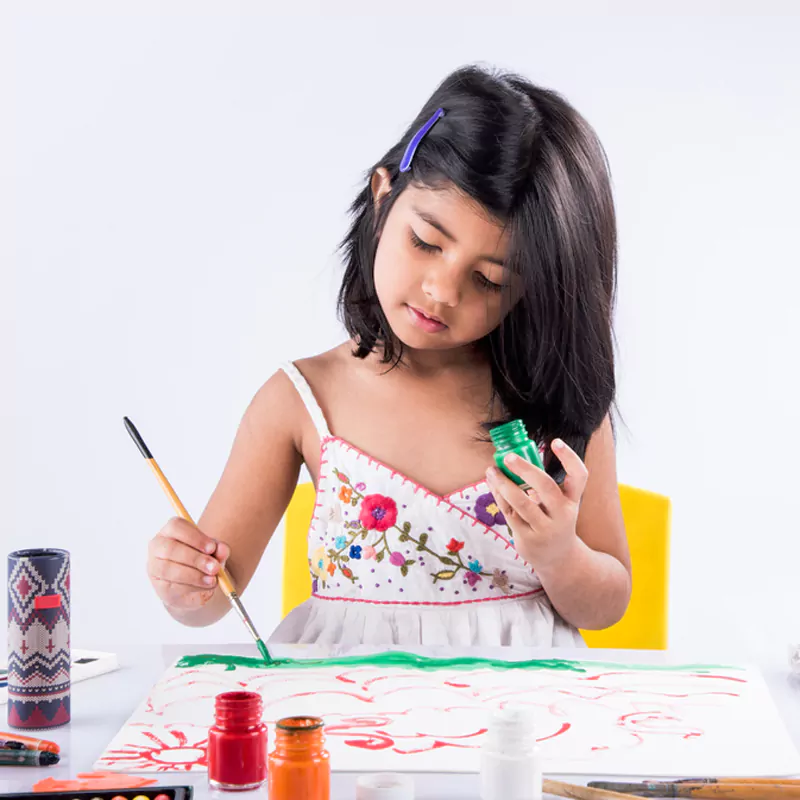
Waiting is a big part of childhood — waiting in line, waiting for your turn, waiting to grow up, waiting for something special to happen. Patience may be a virtue, but as every parent knows it’s not one that many children possess. A child is very impatient by nature and gets distracted easily.
Teaching patience in children is one of the most important life skills your child can learn while she is young. While teaching patience can seem puzzling at first, you will come across numerous each day when you can reinforce patience with your child without her really noticing you are ‘teaching’ her a lifelong skill.
Children love to paint and play with colours. While it can be tempting to rush things to get your child to complete her artwork, please don’t interfere with the flow. Your child’s levels of patience will increase and she will soon realise that good things take time!
Whether it is the duration of the time it takes to complete a piece of art or learn a new artistic technique, it takes patience and dedication. While painting, a child will focus on all aspects like colours, figures to be drawn etc, this requires attention to detail which calls for having patience. Once a child completes her artwork, your child will feel a huge sense of accomplishment and realise that hard work and dedication always pay off.
Art helps build a growth mindset
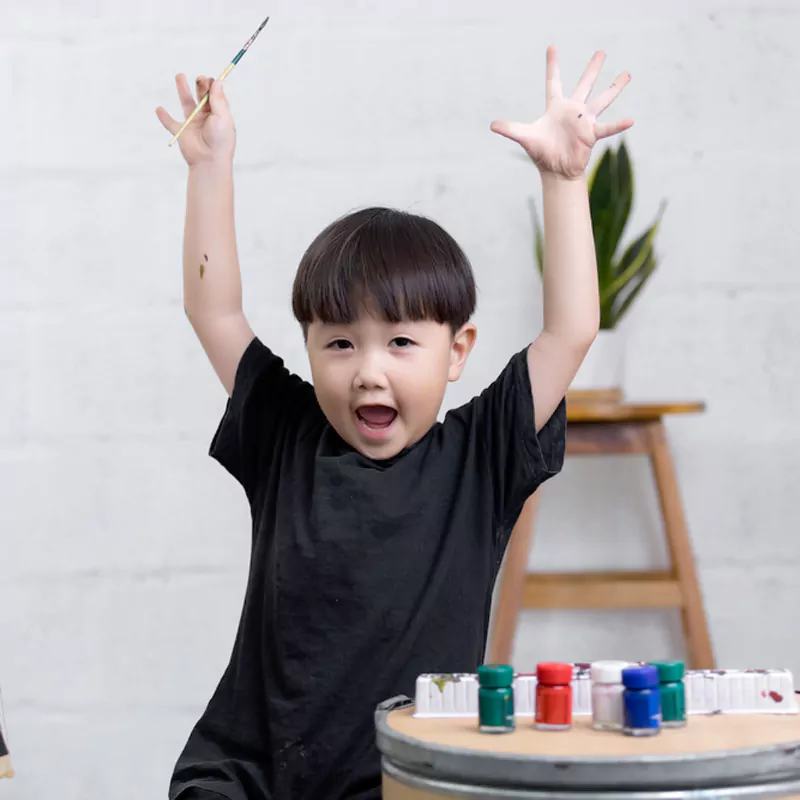
For your child to truly grow and progress, there has to be a point when internal motivation needs to be balanced with external motivation. In the early stages, a child will engage in art activities because it is fun. However, this is not enough for learning an art form. At this point, lean on external motivation (awarding stars or giving her a treat) to continue your child’s progress. Remember, both types of motivation will be helpful and productive.
Spontaneous art is liberating. It is the most effective way to release emotions and reduce stress. So allow your child to be impulsive, throwing paint on a blank sheet of paper Pollock style, and start working from there.
Self-expressive art will help your child discover new depth to her thinking she may not have realized were there. She will also realize that it can be applied to so many other areas of her life. In fact, this is what makes art such an important part of early learning.
Art helps children become socially aware
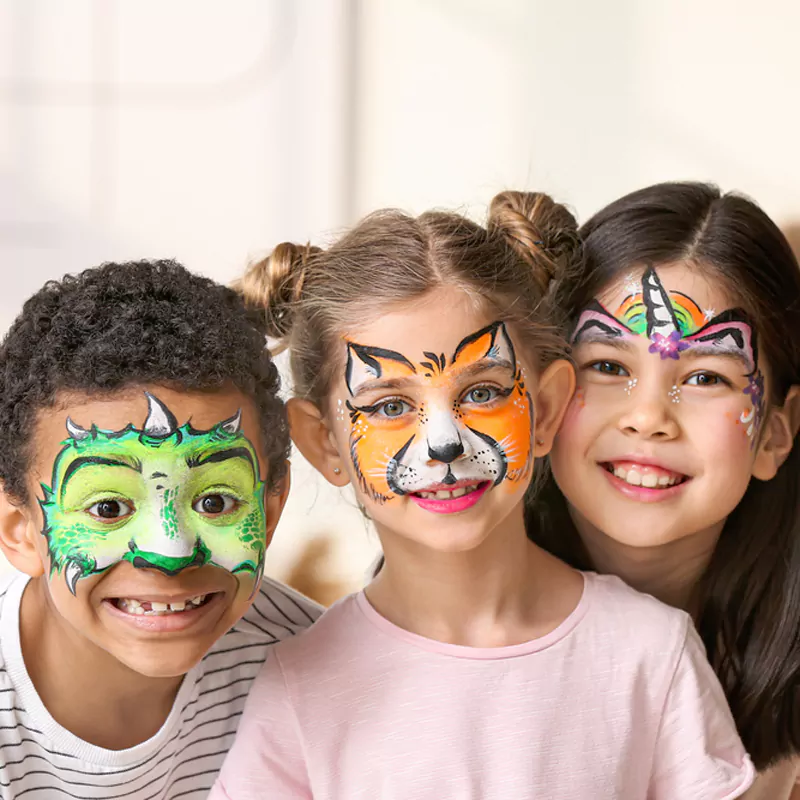
A lot of the information we have about people and cultures that lived millions of years ago came solely from art. A culture without art isn’t possible. Art is at the very core of our identity as humans. The greatest skill we can give our children and humanity is an understanding, appreciation, and ability to create art.
When children have hands-on experience in arts and crafts, they begin to reflect critically on their own work and those of others. They learn to act and think like designers, working intelligently and creatively. By engaging in creative pursuits, children get the opportunity to think and act in a positive, tangible and meaningful way.
According to the International Child Art Foundation, “Research indicates that a child who is exposed to the arts acquires a special ability to think creatively, be original, discover, innovate, and create intellectual property — key attributes for individual success and social prosperity in the twenty-first century.”
Art is a great equalizer, helping create a common ground for children who don’t know each other and who may or may not be interested in the same things. It can help children of all ages, races, abilities, and even languages engage in a shared activity.
When participating with other children in art class, for instance, gives children a chance to interact with others while sharing common interests. The process of arts and crafts also strengthens parent-child bonding.
About Abrakadoodle
Abrakadoodle is dedicated to supporting children in the early years and building strong foundations to ensure they get the best head start. Process Art learning experiences, for instance, inspire toddlers and young children to think differently, be innovative, and explore new ways to learn about interesting things found in the real world.
Our art lessons also change the way a child discovers and imagines. Igniting her mind to think, play and learn like never before. If you like to enrol your child in our art classes or find out more about why art classes for childhood development is important, give Abrakadoodle a call. Or better still, make an appointment with the head of a centre near you.
You will get hands-on exposure to an experience that will make you see art therapy in a way that adds value to your child’s life.
Please note: Abrakadoodle classrooms are thoroughly sanitized every day — the tables, the chairs, the children’s activity stations and everything else the child might touch is made safe and clean. They also wear a mask, wash their hands frequently, and practice social distancing.
Frequently Asked Questions
Art is a diverse concept that allows for emotional exploration and creative expression of ideas through a set of enriching art activities.
The objectives of art include:
- Enhancement of self-awareness and exploration of the surroundings
- Educating children on design elements such as lines, shapes, colours and space.
- Introducing children to art materials and techniques
- Engaging artists in problem-solving scenarios
- Allowing artists to reflect on their perspectives and emotions
The main goals of art include:
- Self-expression: Art can be used as a way for an artist to express their thoughts, feelings, and experiences.
- Communication: Process art learning allows artists to communicate ideas, which improves their fluency and strengthens their vocabulary.
- Emotional connection: Art serves as a great tool to evoke emotions in the viewer, such as happiness, sadness, or wonder.
- Education: Art lessons are an effective methodology for teaching and learning academic concepts.
- Therapeutic: Art can be used as a form of therapy, allowing individuals to express themselves in a non-verbal way and process their emotions.
The importance of learning art in early education can be better understood by measuring the impact of art on a child's overall growth. The following parameters indicate the importance of art education:
- Children become more mindful in their speech and actions.
- Skills acquired through art help develop fine motor skills and improve hand-eye coordination.
- Children feel motivated to explore new lessons and begin to take initiatives.
- It also makes it easier for kids to comprehend complex subjects effectively.
- It also influences a child's social behaviour and shapes their personality.
Apart from instilling fundamental skills in children, the following are the benefits of the process art learning approach:
- Art education can help children learn about different cultures and historical periods through the study of art.
- Art education can help develop social skills such as collaboration and communication through group projects and class discussions.
- Art improves confidence of children in their innate abilities by helping them develop a greater sense of self-esteem.
- Studies have shown that art education can improve academic performance in subjects such as math and reading.
Some of the common concepts covered in art lessons include:
- Art techniques and skills: Children can learn various art techniques, such as drawing, painting, sculpting, and printmaking, as well as techniques for using different art materials such as pencils, paint, clay, and charcoal.
- Design and composition: Children can learn the principles of design and composition, such as the use of color, line, shape, and texture, as well as how to use these elements to create a pleasing composition.
- Visual literacy: Children can learn to analyze and comprehend art, as well as create meaningful and expressive art.
You may also like
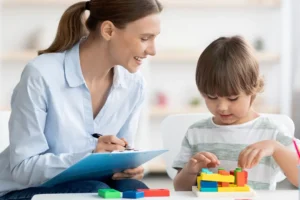
How Art Therapy Activities benefit young children
